Louvre Museum, the core of the european art ( part 1 )
Preparing myself for visiting Louvre
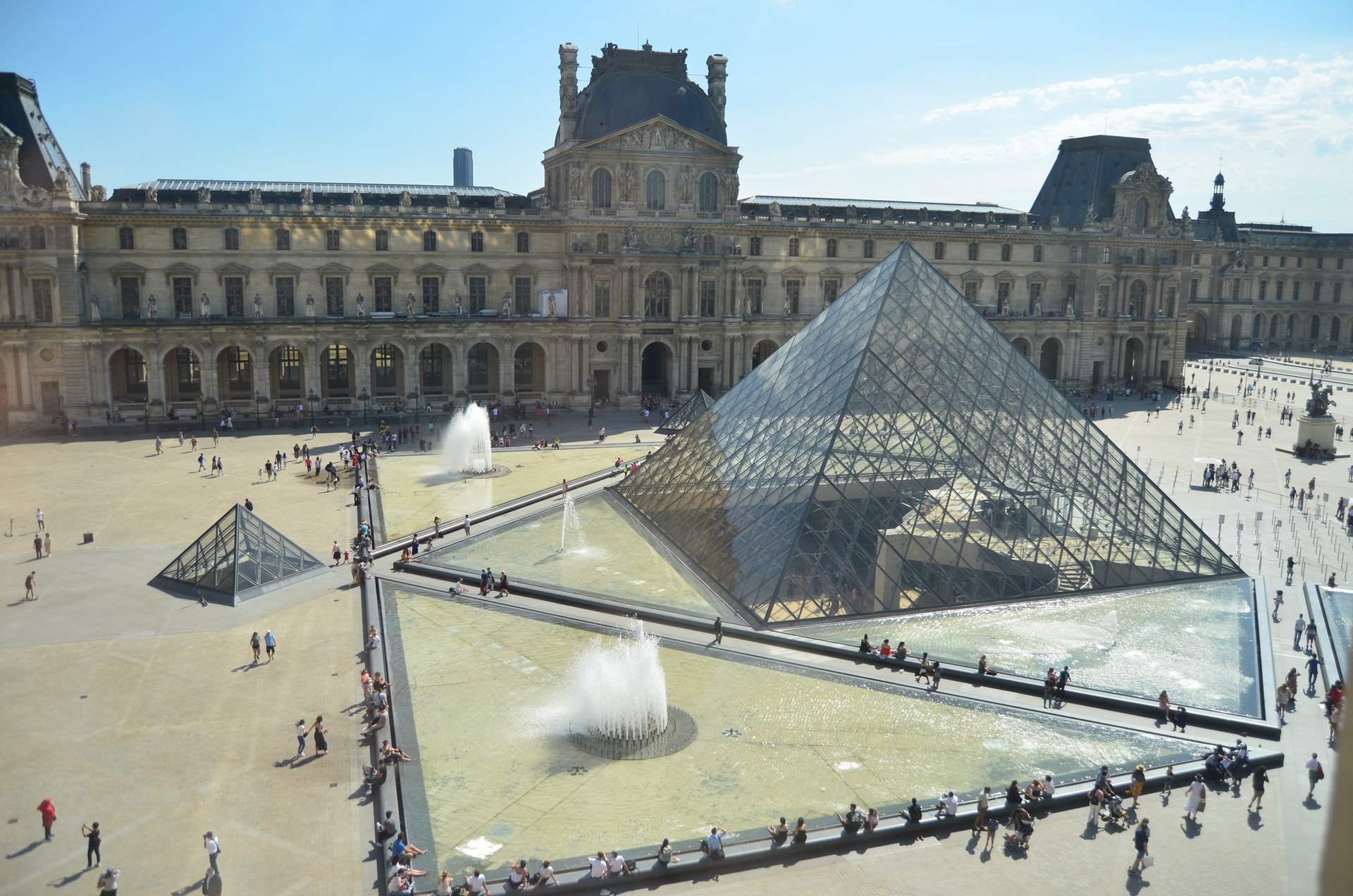
I have learned history of art since high school and because of that I was reading and studying about many significant artworks belonging to different times, regions and artists, but never actually seeing the real paintings, sculptures, architectural buildings or museums until I've started travelling around Europe a couple years ago.
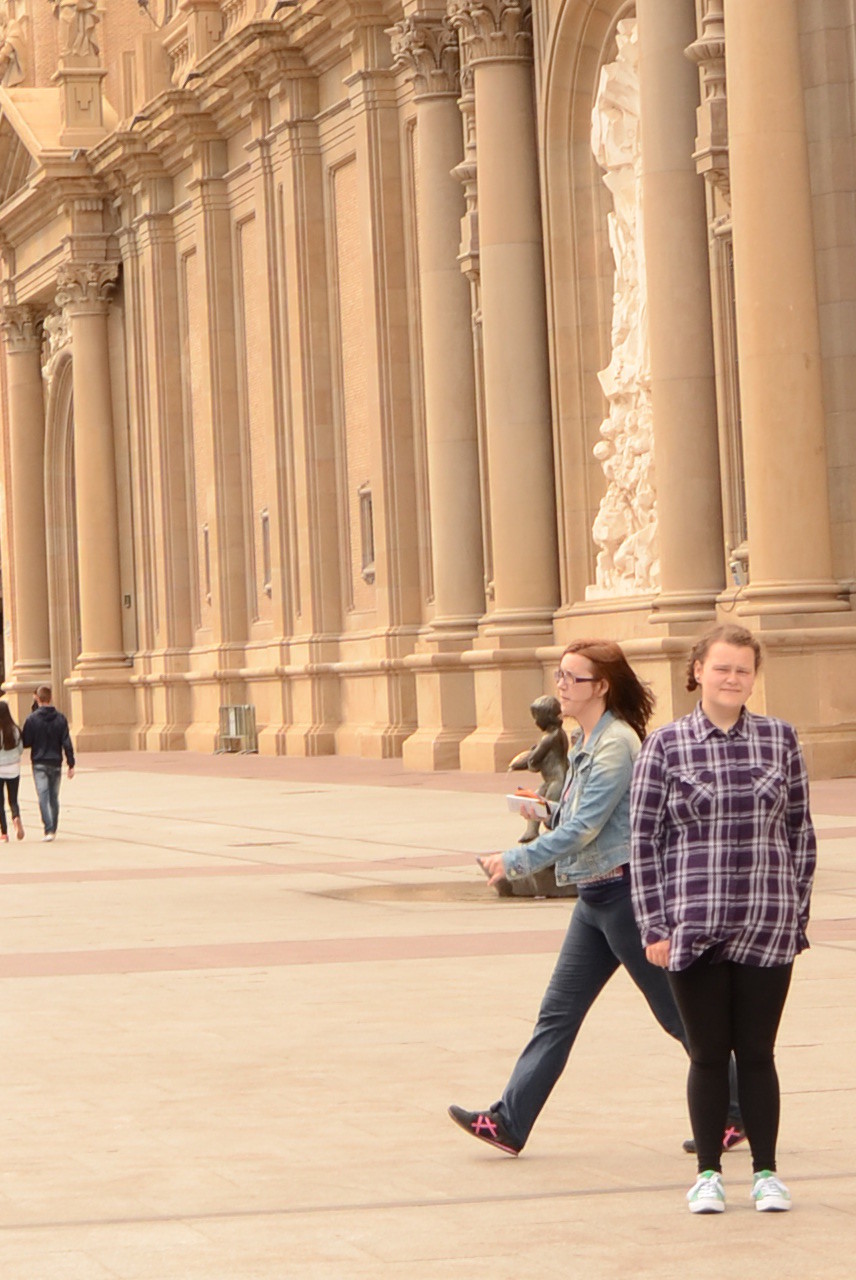
My first time abroad happened to take place in Spain in the city of Zaragoza, where I've visited a museum dedicated to Francisco de Goya, a spanish painter considered to be "the Father of Modern Art".
I remember being totally impressed by everything that I was surrounding me. After this trip a few other city breaks followed in capitals or cities well known for their rich, beautiful or well maintained art and culture.
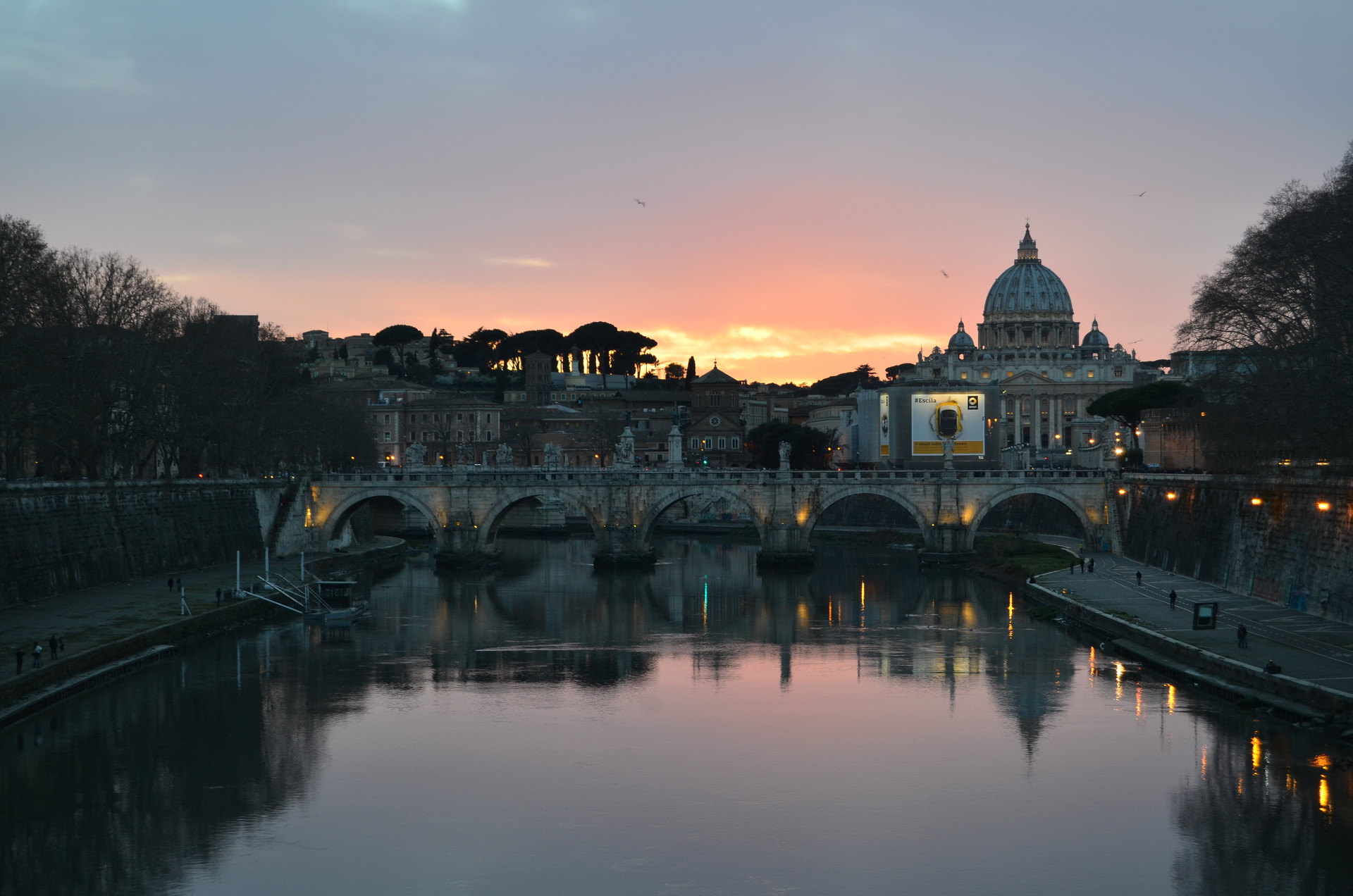
Always taking this criterion into consideration in the years that followed, I have been to
- Rome
- Vatican
- Madrid
- Berlin
- Frankfurt
- Luxembourg
- Strasbourg
- Metz
All of the above being places full of art museums, galleries, old important and representative buildings such as cathedrals, churches, castles, memorial houses, public squares - and the list could go on - in which I have seen very known paintings, sculptures or complex creations such as "The Sistine Chapel" painted by Michelangelo, "The School of Athens" created by Rafael, "Apollo and Daphne" carved out by Lorenzo Bernini, "Saint Peter's Basilica" one of the most renowned work of Renaissance architecture, "Notre Dame Cathedral" of Strasbourg, "The colosesum", "Forum Romanum", "The Brandenburg Gate", "The Centre Pompidou" of Metz, "Guernica" imaged by Picasso, "The Gardener" beautifully painted by Vincent van Gogh, artworks whose title I can not remember, but made by famous various artists such as Robert Rauschenberg, Cy Twombly, Johannes Vermeer, Caspar David Friedrich, Piet Mondrian, Edgar Degas, Caravaggio, Eduard Monet, Louise Bourgeois, Marcel Duchamp, Pipilotti Rist, Max Ernst and so on. (the list written is presenting the artists very randomly as I they came to mind as I was writing)


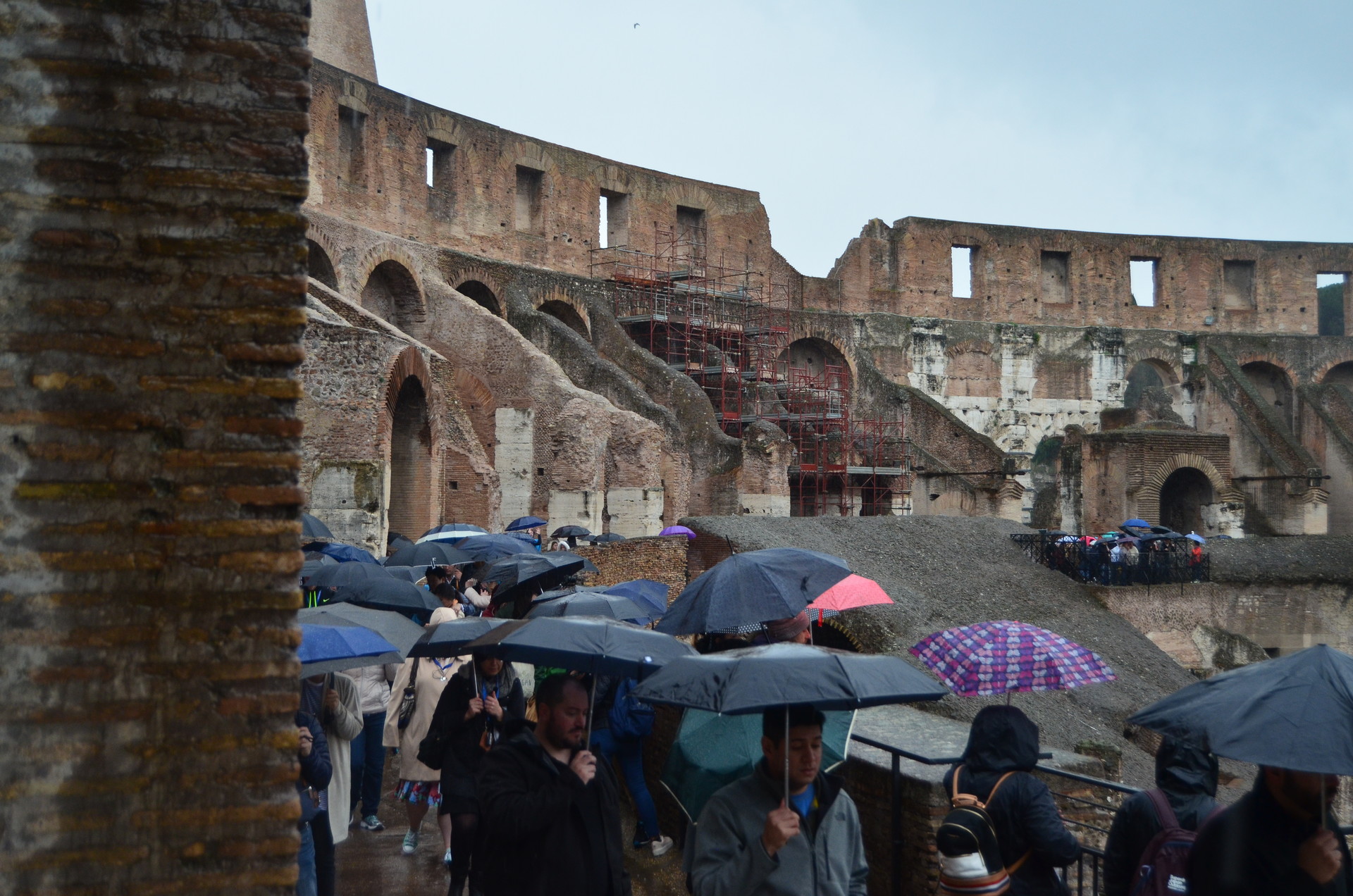
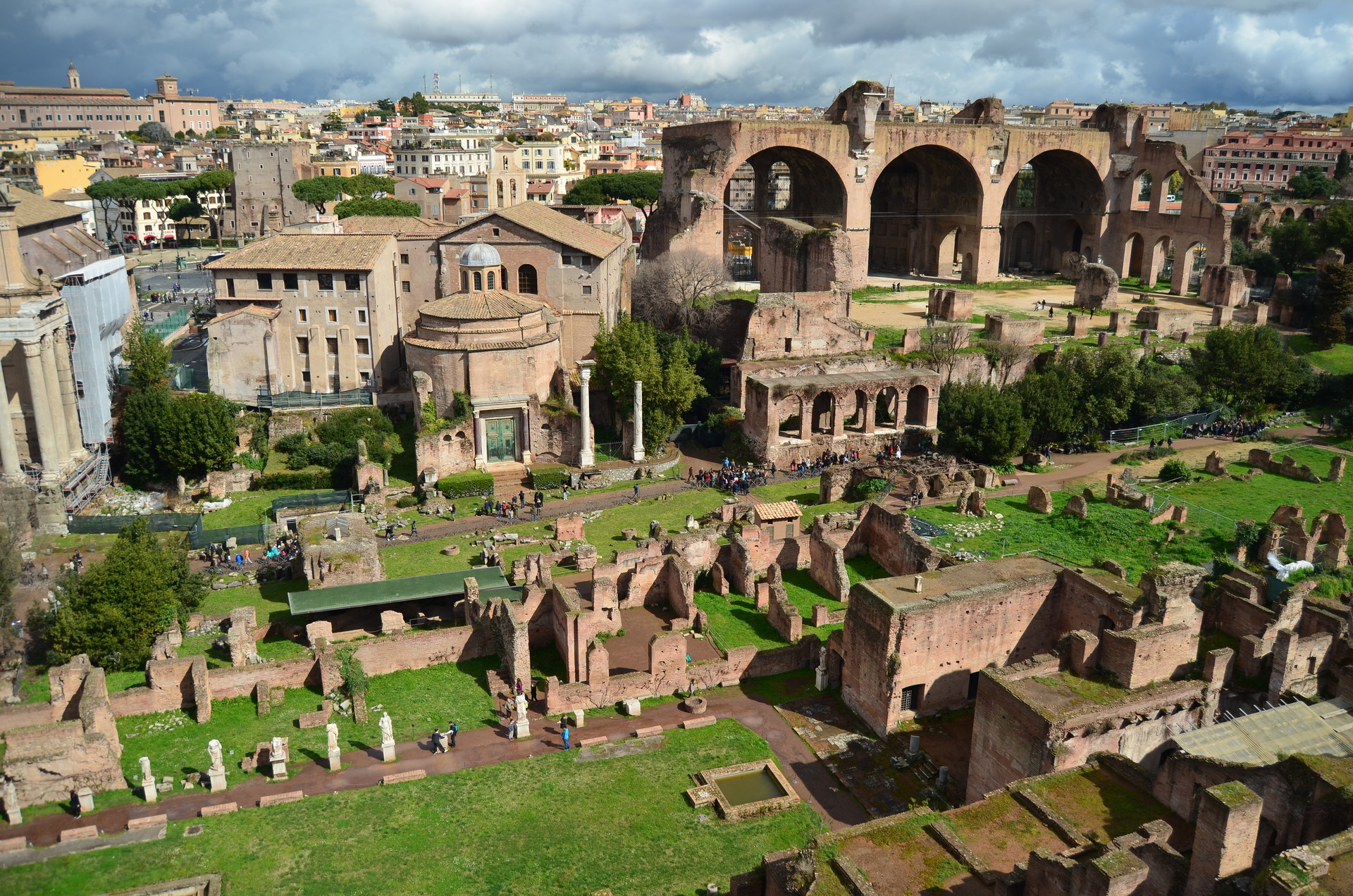
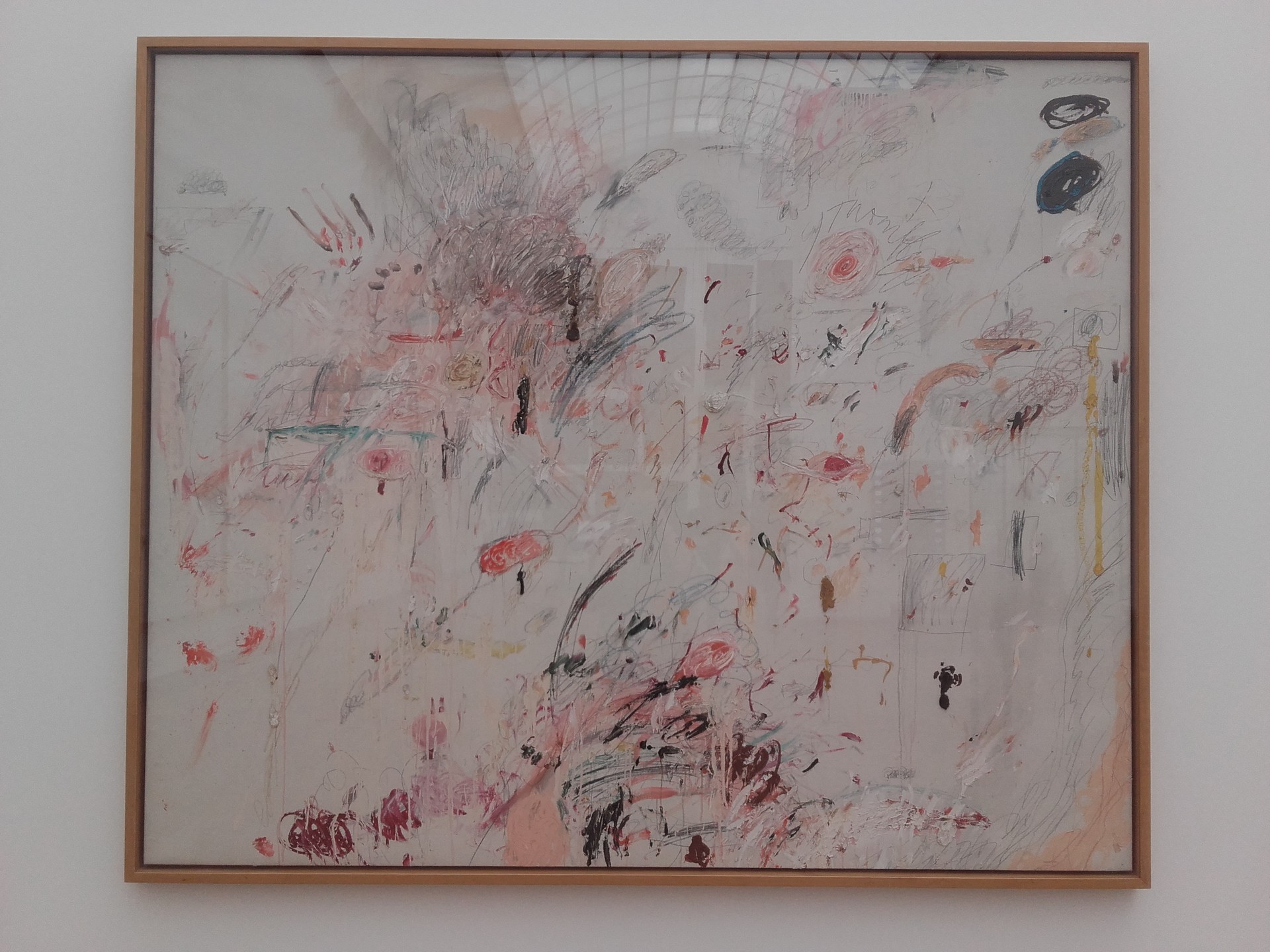

One large and extremly important museum was missing from my list of must see museums in Europe, namely Louvre Museum.
I've known about the Louvre Museum since high school too and going there it had became kind of like a dream that needed to be happen as soon as possible. I was often talking with some of my closest friends about visiting this museum while we were still students because by doing so we would get a free admison, plus a helpful and real art history lesson.
My choice of embarking on an Erasmus mobility in Saarbrucken was influenced by the idea of going from this city in Paris since the French capital it would be 5 hours from Saarbrucken. So, in the middle of my mobility I was jumping on a bus with 2 of my friends to get there.
How we got to the museum?
In Paris, among other museums, Louvre Museum was the one to go to.
It was Sunday and after seeing Musée de l'Orangerie we made our way through Louvre. It was also extremly hot outside, but we chose to walk from Jardin Tuileries until Louvre because the distance between those two was quite small, the museum being located at the end of the garden on Rue de Rivoli.
As a side note for the people who are interested in coming here by metro, the closest stations are Louvre – Rivoli and Palais Royal Musée du Louvre.
The Pyramid
As we were getting closer, the first thing we got to see was the large pyramid which acted like an entrance for the museum's building. We stopped here for sure and spend some time looking at it and also taking lots of pictures while hiding from the harsh sun in the shadow.
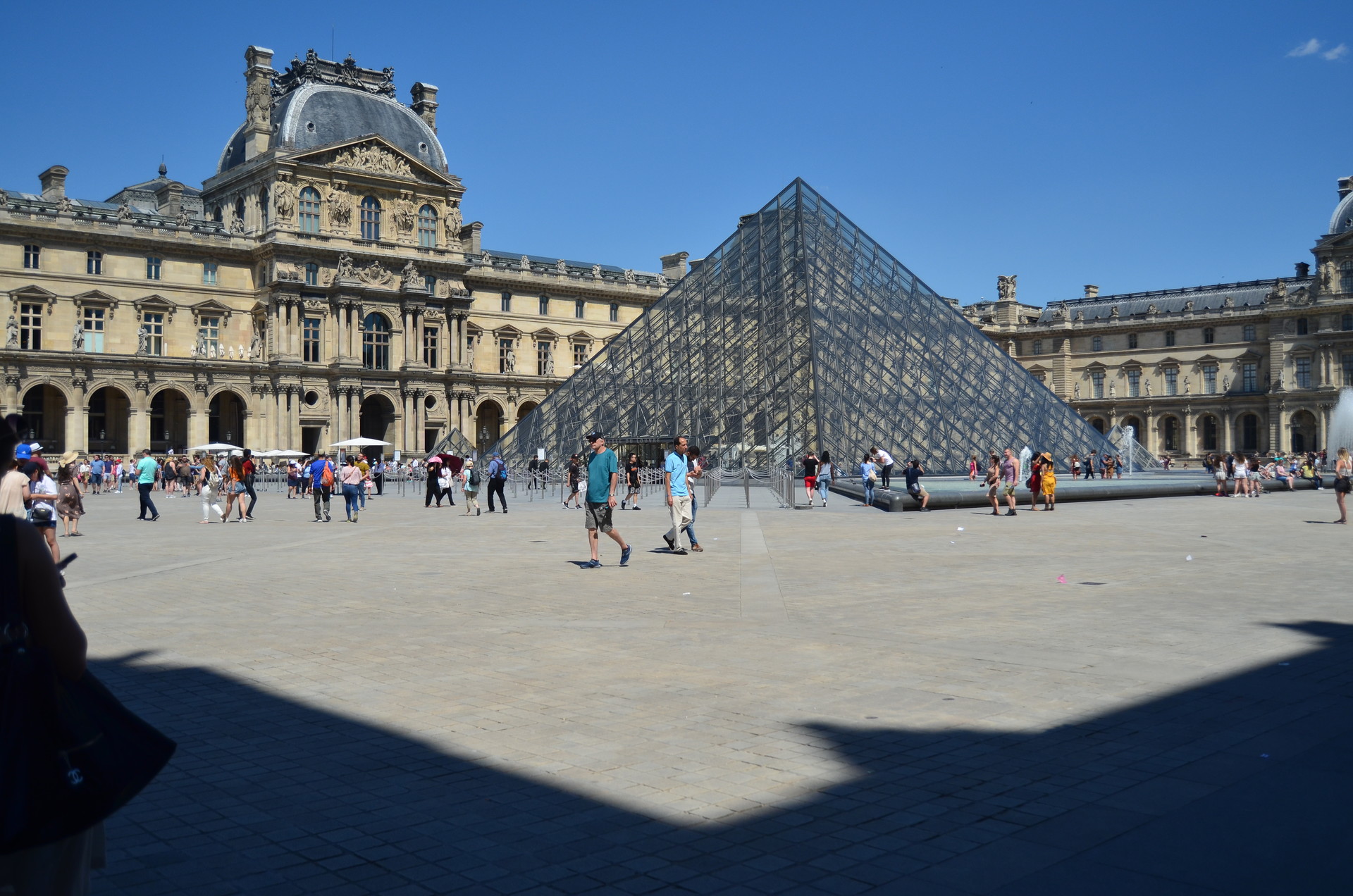
The pyramid was made out of a metalical structure and transparent glass.
The construction was so out standing in comparison with all of the other bulidings surrounding it. I thought that the whole weird and not so common aspect of it increased my curiosity immeditaly of wanting to go closer and inside.
How much it costed a ticket and when it was open?
The admision was free for us because we are under 26 years old and residens of an european country, so all we had to do at the entrance was to show our ID card pointing out at our year of birth written on it.
Usually, the museum is open from Wednesday to Monday from 9 AM to 18 PM, an exception being the days of Wednesday and Friday when the museum is open until 21:45. On Thursday Louvre is totally closed.

A huge museum
Soon, very excited being, we got inside the pyramid. We got amazed by the greatness of the construction. The view was keeping our eyes up to the blue sky which could be seen through everything.
The rolling stairs got us to the reception area from where we went to the cloakroom to leave our backpacks and other things that we were carrying.
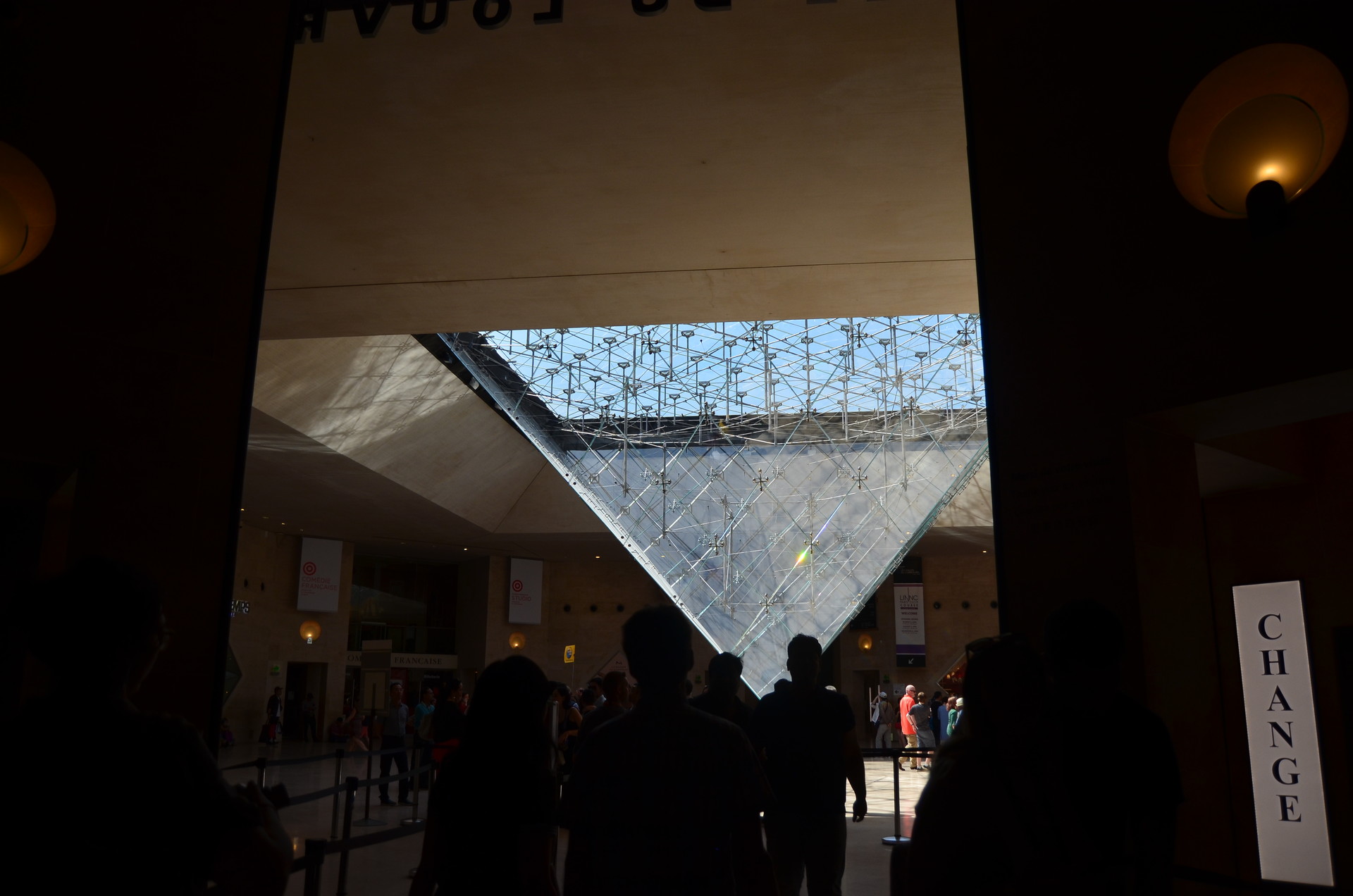
Somehow, we got lost very easily in our way of finding the begining of the galleries and exhibitions, so we wondered a bit in the -2 level of the building going back and forward through some hallways without getting where we wanted to.
The feeling we had was similar to the one we felt while visiting the museums of Vatican, namely that we are in another city ( in Vatican we were for good in another city) or even in a mall because of the big amount of noisy people present everywhere.
The reception area was huge and it had very tall walls and large open spaces. But, finally we found a map that proved to be very useful in our journey through the Louvre. At the same time, because the museum seemed to be enormous and we realised that we didn't have enough time to see it in its entirety, we decided to analyze the map before we start and mark all of the artworks that we wanted to watch on it.

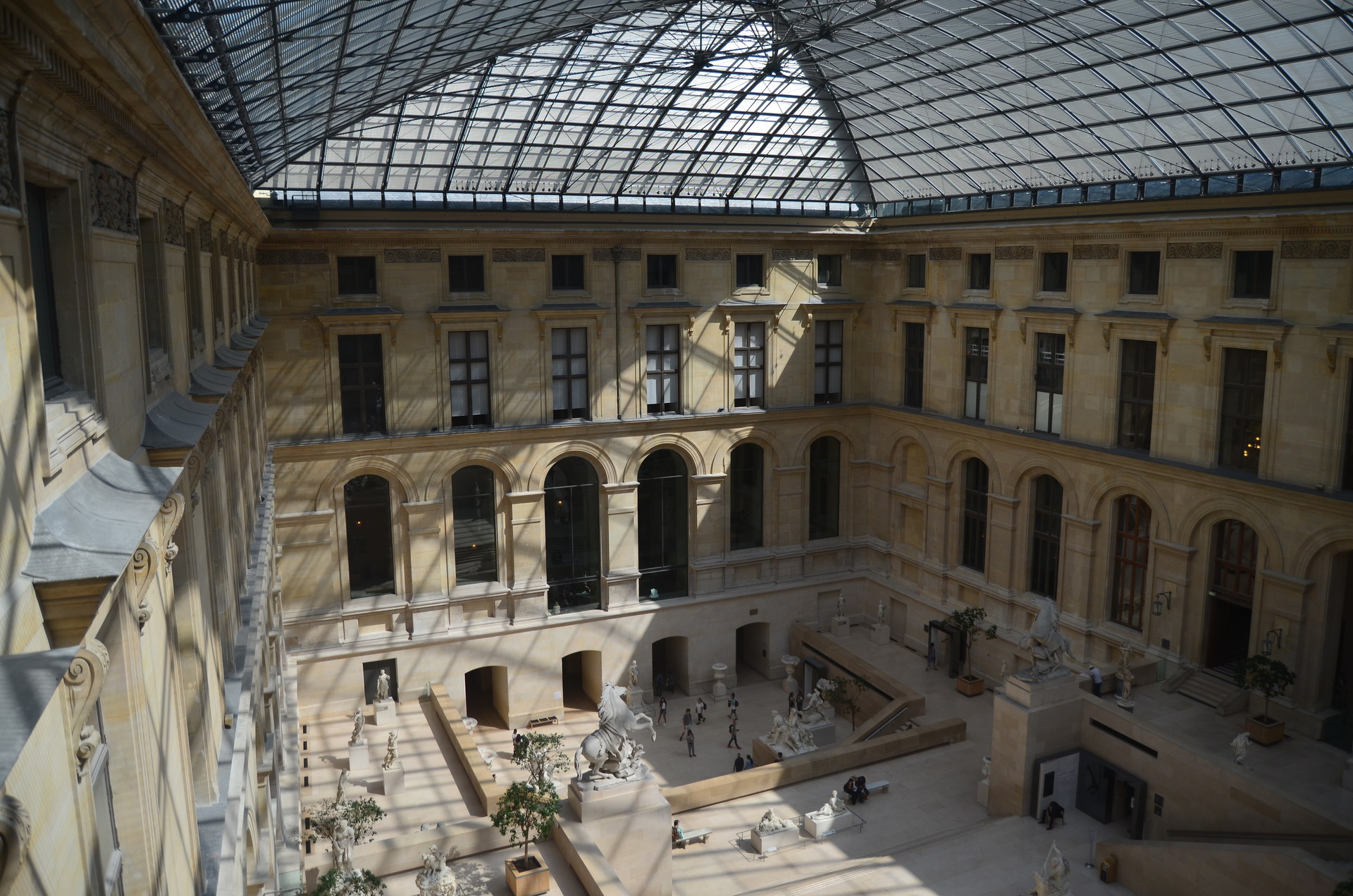
We skipped Level -1 and Level 0 that had exhibited collections of painting, drawings, antiquities and sculptures coming from various corners of the world such as Greek, Egypt, Oceania, the Roman Empire, America and dating back to the 6500 BC ages and going up to the 19th century.
The reason why we skipped all of those was laying in our desire of seeing something else, much more suitable with our field of study.
